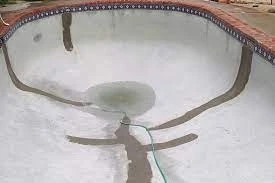Swimming pools are a beloved feature of many homes, offering a refreshing escape during the hot summer months. However, over time, cracks can develop, compromising the pool's aesthetics, functionality, and even safety. One popular type of pool construction, Gunite pools, is known for its durability and strength. But can Gunite pools crack? In this expert guide, we will explore the causes of Gunite pool cracks, discuss effective repair techniques, and provide essential tips to prevent future cracks.
Understanding Gunite Pool Cracks
Gunite pools are constructed using a mixture of dry cement and sand, combined with water at the construction site. This mixture is then sprayed onto a steel or wire framework, creating a solid structure. While Gunite pools are renowned for their resilience, they are not entirely immune to cracks. Several factors can contribute to Gunite pool cracks, including:
Ground Movement
Shifting soil or geological conditions can exert pressure on the pool shell, leading to cracks.
Structural Stress
Over time, the natural expansion and contraction of the pool shell due to temperature variations and water chemistry can cause cracks.
Poor Construction Practices
Inadequate reinforcement, improper mix ratios, or insufficient curing time during the pool's construction can weaken the structure and make it more prone to cracks.
Environmental Factors
Harsh weather conditions, such as freezing temperatures or excessive sunlight exposure, can impact the pool's integrity and contribute to cracking.
Repairing Gunite Pool Cracks
When faced with Gunite pool cracks, it's essential to address them promptly to prevent further damage. Here are some expert repair techniques:
Crack Assessment
Begin by assessing the severity and extent of the cracks. Superficial, hairline cracks may require minimal intervention, while larger cracks may demand more extensive repairs.
Crack Injection
Professional pool contractors often use specialized techniques like crack injection to repair Gunite pool cracks. This process involves injecting epoxy or polyurethane-based resins into the cracks, effectively sealing them and restoring the pool's structural integrity.
Surface Patching
For smaller cracks, surface patching with high-quality pool patching compounds can provide a reliable solution. The damaged area is carefully prepared, and the patching compound is applied to reinforce the cracked section.
Replastering
In cases where the cracks are extensive or if the pool's surface is significantly deteriorated, replastering may be necessary. This process involves removing the existing plaster, repairing the cracks, and applying a fresh layer of plaster or alternative pool finishes.
Seek Professional Assistance
While minor cracks can sometimes be addressed with DIY techniques, it is often advisable to engage the expertise of professional pool repair contractors. They possess the knowledge, experience, and specialized equipment required to handle complex repairs and ensure long-lasting results.
Preventing Future Pool Cracks
Prevention is key to maintaining a crack-free Gunite pool. Here are some preventive measures to consider:
Adequate Design and Construction
Ensure that your Gunite pool is constructed by experienced professionals who follow proper design principles and construction practices.
Proper Maintenance
Regularly monitor and maintain the pool's chemical balance, water level, and equipment. Maintaining optimal conditions can minimize stress on the pool shell.
Avoid Excessive Water Level Fluctuations
Avoid rapid changes in water level, as they can place stress on the pool structure. Proper drainage systems and avoiding overfilling or draining the pool too quickly can help prevent cracks.
Address Soil Issues
If you live in an area with expansive or unstable soil, consult with a geotechnical engineer to assess the soil conditions and implement appropriate measures to mitigate potential damage to the pool structure.
Timely Repairs
Promptly address any signs of damage, such as hairline cracks or surface deterioration, to prevent them from developing into more significant problems.
Conclusion
While Gunite pools are known for their strength, they can develop cracks over time. Understanding the causes of Gunite pool cracks, employing effective repair techniques, and implementing preventive measures are vital for maintaining the beauty, functionality, and longevity of your swimming pool. By following the expert advice in this guide, you can confidently address Gunite pool cracks, ensuring many enjoyable years of swimming and relaxation in your well-maintained pool.


